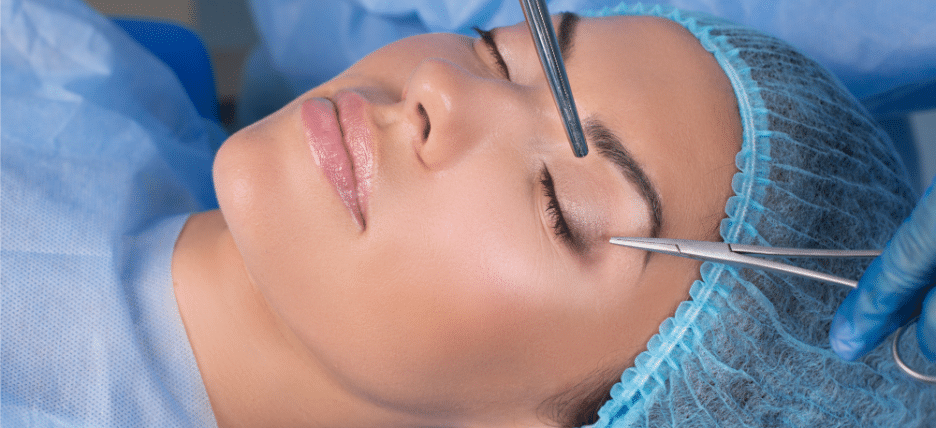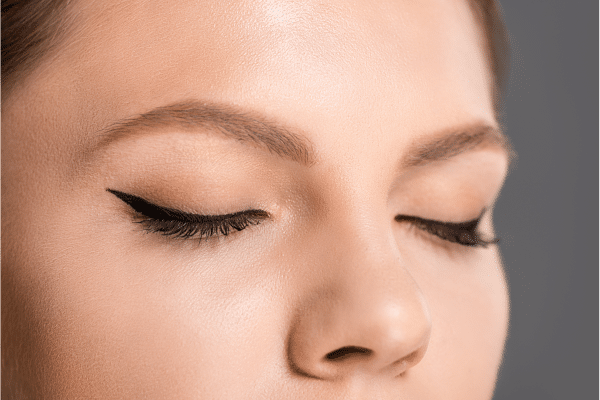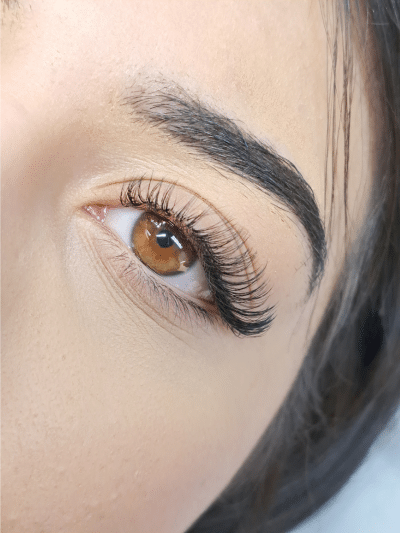
Eyelid surgery, also known as blepharoplasty, is an effective treatment for droopy upper eyelids, sagging lower lids, or excess skin folds around the eye area. The procedure can take years off your appearance and increase and improve your field of vision as well.
Whether you are still in the planning stages of surgery or you have your appointment already set, we’d like to help you prepare for what you can expect before and after eyelid surgery. Before we dive right in, however, let’s examine what blepharoplasty actually entails.
What Is Eyelid Surgery?
Eyelid surgery can be performed on either the upper eyelids, the lower eyelids, or both. Upper eyelid surgery (upper blepharoplasty) tends to be performed for the correction of drooping, heavy upper eyelids — upper eyelids that hang down over the eyes and give you an aged, tired appearance in addition to sometimes compromising vision. The surgery generally involves excising excess upper eyelid skin and fat.
This procedure may also be called upper eyelid ptosis repair when the muscle of the eyelid is tightened or shortened. Some surgeons perform only cosmetic droopy upper eyelid surgery but do not repair the muscle to improve function of the eyelids.
Lower eyelid surgery (lower blepharoplasty), on the other hand, is typically performed to remove under eye bags and puffiness. Excess skin and/or excess fat may be excised from below the lid. In some cases, the fat will not actually be removed, but will be more evenly distributed below the eye so that it doesn’t appear as a “lump” of fat beneath each eye.
Lower and Upper Eyelid Surgery Before and After Preparation
Here’s what you can expect with lower and upper eyelid surgery before and after, including pain expectations, expected recovery timeline, at-home tips, follow-up appointments, and more.
What to Expect Before Upper and Lower Blepharoplasty
Finding a Plastic Surgeon
 Your first step toward successful eyelid surgery is to schedule a consultation appointment with a qualified plastic surgeon. It’s important to find a surgeon who has special experience performing upper lid blepharoplasty or lower blepharoplasty. You should also find a surgeon who is board certified and has positive reviews from past patients.
Your first step toward successful eyelid surgery is to schedule a consultation appointment with a qualified plastic surgeon. It’s important to find a surgeon who has special experience performing upper lid blepharoplasty or lower blepharoplasty. You should also find a surgeon who is board certified and has positive reviews from past patients.
Unfortunately, some doctors may advertise their ability to perform this surgery without actually having the right kind of experience. These surgeons may charge far less for their treatments than other surgeons with more experience and expertise.
Beware of such doctors. Upper and lower blepharoplasty surgeries are difficult and require an immense amount of training and skill. Not finding the right surgeon for your procedure may result in a botched upper eyelid surgery or botched lower eyelid surgery, and these can be difficult to remediate.
Your Consultation Appointment
Your consultation appointment is a time for you to meet one-on-one with your surgeon so that you can explain what you’re looking for in terms of results. Dr. Mohan will have some questions for you about your medical history and vision, and be sure to bring any questions you may have as well. He will also closely examine your eye area before presenting your best options for treatment.
Prepare Your Home and Life for Surgery
At home, it’s important to prepare for your upcoming surgery. Of course, you’ll need to take time off from work, the length of which you will decide upon with your surgeon. In addition, you may not be able to take care of regular tasks on your own for at least a few days or weeks following surgery. So, be sure to ask a friend or relative for assistance where possible.
What to Expect After Upper and Lower Blepharoplasty
Post-Surgery Symptoms
 If you take a look at day by day eyelid surgery recovery time photos, you’ll see that improvements are typically rapid after bilateral upper blepharoplasty or lower eyelid surgery. After your procedure, you will be able to go home on the same day with a trusted relative or friend.
If you take a look at day by day eyelid surgery recovery time photos, you’ll see that improvements are typically rapid after bilateral upper blepharoplasty or lower eyelid surgery. After your procedure, you will be able to go home on the same day with a trusted relative or friend.
Once home, be sure you focus on rest and relaxation. Do not try to do too much at once. You will be directed to avoid lifting anything heavy or exercising for at least the initial recovery period.
Swelling, some light bruising, and slight discomfort should be expected. Your surgeon may recommend cold compresses, the application of light gauze, and/or the use of a lubricating ointment. To what extent your recovery is a challenge will vary depending on whether you are undergoing upper eyelid surgery, lower eyelid surgery, or both.
Prepping Your Home
In any case, it’s important to prepare your home for your recovery before undergoing surgery. Pre-cook freezer meals and purchase ready-made snacks and bottled water. Get books, magazines, movies, or TV shows ready for entertainment. Finally, set up a comfortable area in your living room or bedroom where you can rest during the day.
Followup Appointments
Throughout your recovery, you will be required to attend followup appointments with your plastic surgeon. Be sure to attend all of these appointments as they are critical to ensuring a good outcome to your procedure.
You will be notified when you can return to your regular daily activities, driving, work, and exercise. Be sure to follow all of your plastic surgeon’s post-op instructions as these will be critical to achieving your desired results.
Book Your Consultation Appointment Today
If you have bags under your eyes, extra upper eyelid skin that you would like to get rid of, or trouble seeing because of droopy upper eyelids, blepharoplasty can help.
Take a look at some of our eyelid surgery before and after photos to see what this surgery can do to transform droopy upper eyelids, under eye bags, and more.
Then, give us a call to schedule a consultation appointment with board certified plastic surgeon Dr. Raja Mohan. We look forward to your call!